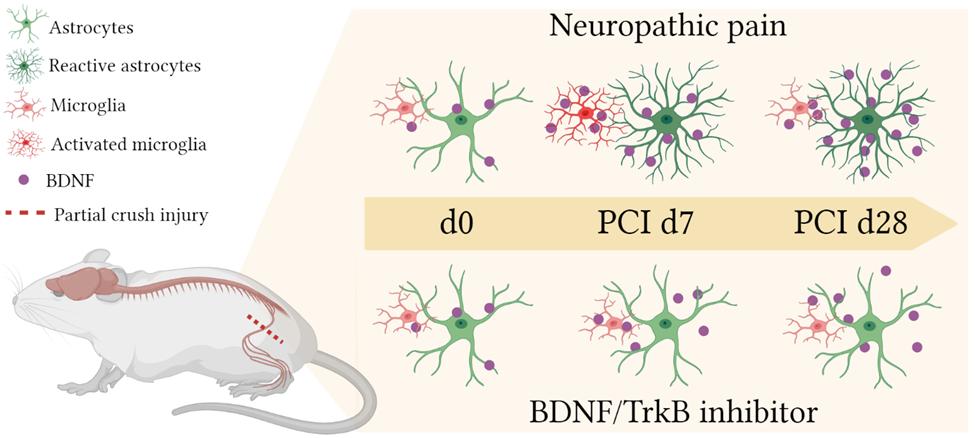Articles
Article Tools
Stats or Metrics
Article
Original Article
Exp Neurobiol 2023; 32(5): 343-353
Published online October 31, 2023
https://doi.org/10.5607/en23031
© The Korean Society for Brain and Neural Sciences
BDNF/TrkB Signaling Inhibition Suppresses Astrogliosis and Alleviates Mechanical Allodynia in a Partial Crush Injury Model
Tien Thuy Phan1,2, Nishani Jayanika Jayathilake1,3, Kyu Pil Lee3* and Joo Min Park1,2*
1Center for Cognition and Sociality, Institute for Basic Science, Daejeon 34126,
2IBS School, University of Science and Technology, Daejeon 34126,
3Department of Physiology, College of Veterinary Medicine, Chungnam National University, Daejeon 34134, Korea
Correspondence to: *To whom correspondence should be addressed.
Kyu Pil Lee, TEL: 82-42-821-6754
e-mail: kplee@cnu.ac.kr
Joo Min Park, TEL: 82-42-878-9112
e-mail: joominp@ibs.re.kr
This is an Open Access article distributed under the terms of the Creative Commons Attribution Non-Commercial License (http://creativecommons.org/licenses/by-nc/4.0) which permits unrestricted non-commercial use, distribution, and reproduction in any medium, provided the original work is properly cited.
Abstract
Neuropathic pain presents a formidable clinical challenge due to its persistent nature and limited responsiveness to conventional analgesic treatments. While significant progress has been made in understanding the role of spinal astrocytes in neuropathic pain, their contribution and functional changes following a partial crush injury (PCI) remain unexplored. In this study, we investigated structural and functional changes in spinal astrocytes during chronic neuropathic pain, employing a partial crush injury model. This model allowes us to replicate the transition from initial nociceptive responses to persistent pain, highlighting the relevance of astrocytes in pain maintenance and sensitization. Through the examination of mechanical allodynia, a painful sensation in response to innocuous stimuli, and the correlation with increased levels of brain-derived neurotrophic factor (BDNF) along with reactive astrocytes, we identified a potential mechanistic link between astrocytic activity and BDNF signaling. Ultimately, our research provides evidence that inhibiting astrocyte activation through a BDNF/TrkB inhibitor alleviates mechanical allodynia, underscoring the therapeutic potential of targeting glial BDNF-related pathways for pain management. These findings offer critical insights into the cellular and molecular dynamics of neuropathic pain, paving the way for innovative and targeted treatment strategies for this challenging condition.
Graphical Abstract

Keywords: Chronic pain, Sciatic nerve lesion, Astrogliosis, BDNF, Mechanical allodynia


